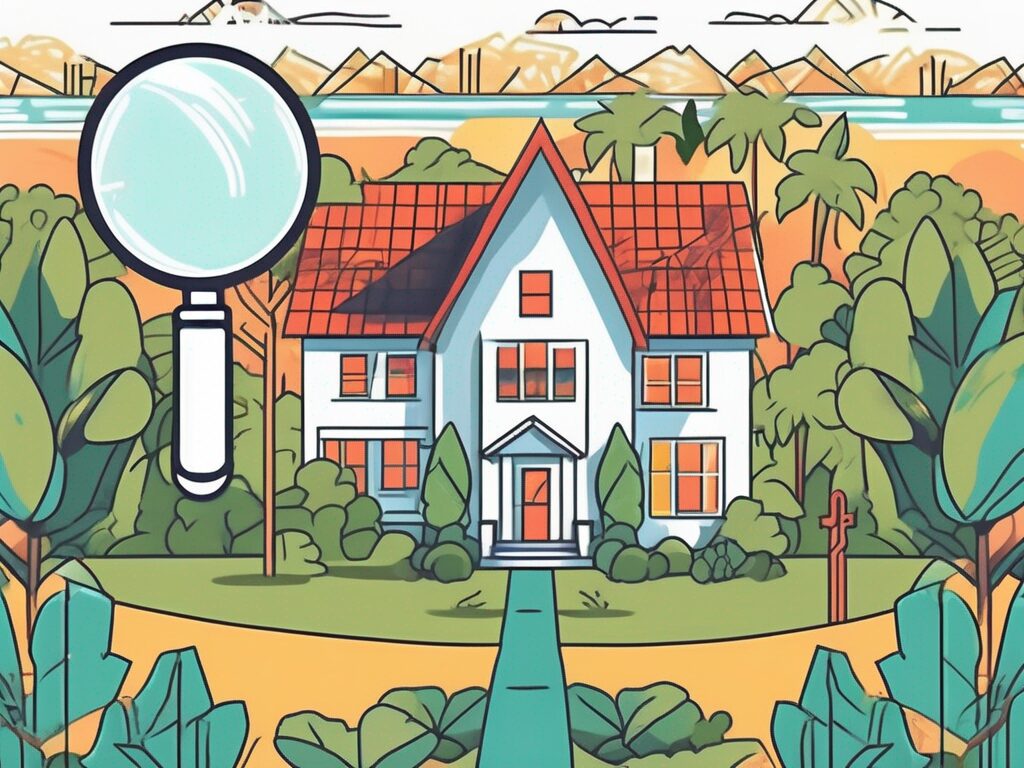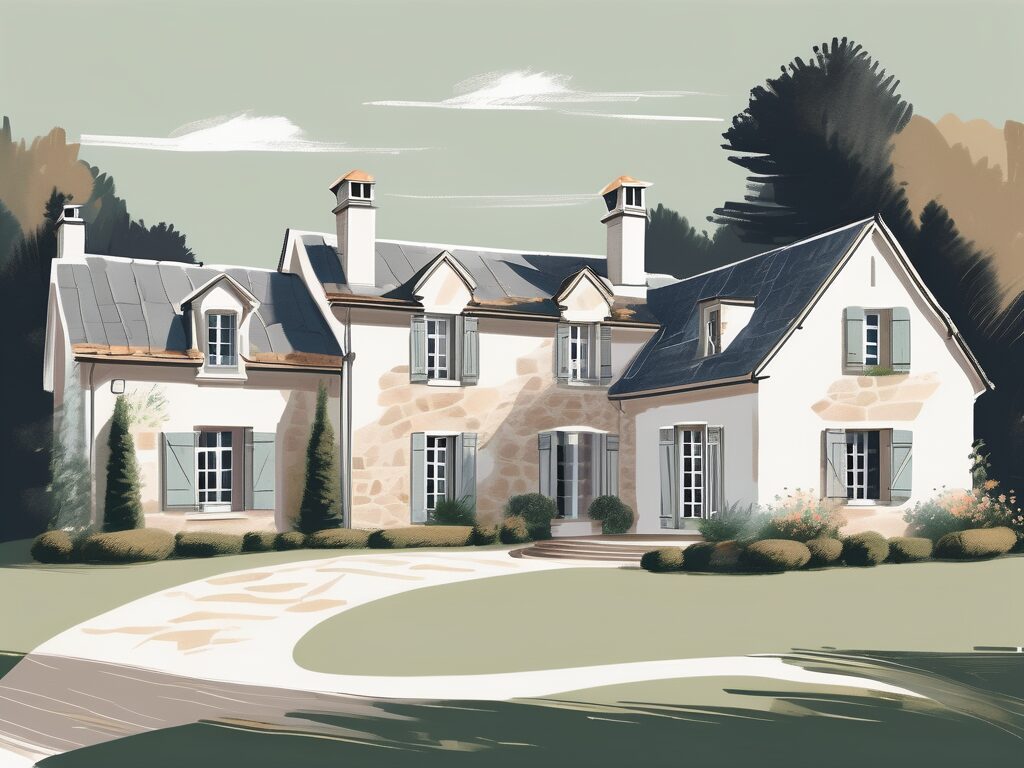
Agent A-Team or Solo Superhero? Finding the Right Real Estate Partner for Your Selling Journey in Wildwood Florida
When it comes to selling your home in Wildwood, Florida,…
January 29, 2024
French country house design is known for its timeless elegance and charming aesthetics. With roots dating back to the rural homes of 17th century France, this design style has evolved over the years to become a symbol of sophistication and class. In this article, we will explore the various styles of French country design, delve into its key features, and discuss important considerations for building a French country home. We will also uncover the elements that define French country interiors, creating spaces that exude timeless elegance and grace.
The influence of French Creole and Acadian architecture can be seen in many French country homes across the southern United States. The graceful blend of French, Spanish, and Caribbean elements makes these styles unique and captivating. From the distinctive rooflines to the intricate ironwork, every detail tells a story of the rich history and cultural heritage of this design style.
French Creole architecture, originating in the 18th century, is characterized by its adaptation to the hot and humid climate of the southern United States. The raised foundations and wide porches provide shade and ventilation, while the steeply pitched roofs help to shed heavy rainfall. The use of louvered shutters and French doors allows for natural light and airflow, creating a comfortable and welcoming interior.
Acadian architecture, on the other hand, is influenced by the French settlers who migrated to the region of Acadia, now known as Nova Scotia, Canada. The Acadians brought with them their own unique building techniques and design elements, which eventually evolved into the distinct Acadian style. The use of vertical wooden siding, steep gable roofs, and simple yet elegant details are characteristic of Acadian architecture.
French colonial design, with its symmetrical façades and formal proportions, embodies a sense of refined elegance. The use of stucco and natural stone on the exteriors adds a touch of sophistication, while the pitched roofs and dormer windows create a sense of grandeur. French colonial homes are a testament to the enduring beauty and grace of French country design.
French colonial architecture flourished in the 18th and 19th centuries, particularly in the southern regions of the United States and the Caribbean. The style drew inspiration from the classical architecture of France, incorporating elements such as pilasters, cornices, and pediments. The interiors of French colonial homes often feature high ceilings, ornate moldings, and grand staircases, creating a sense of opulence and grandeur.
One notable example of French colonial architecture is the historic French Quarter in New Orleans. The charming buildings with their wrought iron balconies and colorful facades are a testament to the enduring allure of this design style.
French provincial style is all about embracing the rustic charm of the countryside. With its warm color palettes, natural materials, and relaxed atmosphere, this design style creates spaces that are both inviting and elegant. From the exposed beams to the natural floors, every element in a French provincial home reflects a sense of authenticity and simplicity.
Originating in the rural regions of France, French provincial design draws inspiration from the traditional farmhouses and country estates of the countryside. The use of rough-hewn stone, weathered wood, and earthy tones creates a warm and cozy ambiance. The interiors of French provincial homes often feature rustic furniture, floral fabrics, and decorative accents inspired by nature.
French provincial style has gained popularity around the world, as it offers a timeless and charming aesthetic that evokes a sense of tranquility and comfort. Whether in a countryside cottage or a city apartment, embracing the rustic charm of French provincial design adds a touch of elegance and warmth to any space.
French country architecture is known for its captivating facades, graceful sloping roofs, arched windows and doors, shutters and French doors, exposed beams and natural floors, plaster walls and porches with columns, and the finishing details of trims. Let’s explore each of these features in more detail:
One of the defining features of French country architecture is the use of stucco and natural stone on the exteriors. These materials not only add visual appeal but also provide durability and insulation. The combination of stucco and natural stone creates a captivating façade that instantly draws the eyes and evokes a sense of timeless elegance.
Stucco, a type of plaster made from cement, sand, and water, is applied to the exterior walls of French country homes. It can be finished in a variety of textures, from smooth to rough, adding depth and interest to the façade. Natural stone, such as limestone or granite, is often used as accents or cladding, creating a beautiful contrast with the stucco. These materials not only enhance the aesthetic appeal but also protect the home from the elements.
Sloping roofs are a signature element of French country architecture. Whether it’s a hipped roof, a gabled roof, or a combination of both, the graceful slope adds a touch of charm and sophistication to the overall design. The rooflines of French country homes are often adorned with decorative elements such as finials and dormer windows, further enhancing their visual appeal.
The sloping roofs not only contribute to the architectural beauty but also serve a practical purpose. They allow for efficient water drainage, preventing water from pooling and causing damage. Additionally, the steep pitch of the roofs provides ample attic space, which can be utilized for storage or converted into living areas.
Arched windows and doors are another characteristic of French country architecture. These elegant features not only bring in an abundance of natural light but also add character to the design. Whether it’s a large arched window overlooking a picturesque landscape or a charming arched door welcoming guests, these architectural elements contribute to the overall beauty and charm of French country homes.
The arched shape of the windows and doors is reminiscent of the arches found in medieval European architecture. It adds a sense of history and timelessness to the design, creating a connection to the past. The curved lines soften the overall look of the home and create a sense of flow and harmony.
Shutters and French doors are common features in French country homes. The use of shutters not only adds a touch of charm and tradition but also provides protection from the elements. French doors, with their glass panels and intricate detailing, create a seamless connection between indoor and outdoor spaces, allowing for a flow of natural light and a sense of openness.
Shutters are typically made of wood and can be functional or decorative. They can be closed to provide privacy and security or opened to let in fresh air and sunlight. French doors, on the other hand, are known for their elegance and beauty. The glass panels allow for unobstructed views of the surrounding landscape, blurring the boundaries between the interior and exterior.
Exposed beams and natural floors are key elements in French country architecture. The use of timber beams not only adds structural support but also brings a sense of warmth and authenticity to the interiors. Natural floors, whether it’s hardwood or stone, add texture and character, creating spaces that are both timeless and inviting.
Exposed beams are often seen in the main living areas of French country homes, such as the living room or kitchen. They can be made of reclaimed wood, showcasing the natural beauty of the material. The beams add a rustic charm and create a cozy atmosphere. Natural floors, whether it’s hardwood planks or stone tiles, provide a durable and low-maintenance option. They can be left in their natural state or finished with a protective sealant, depending on the desired look.
Plaster walls and porches with columns are classic touches in French country homes. The smooth finish of plaster walls adds a touch of refinement, while the use of columns on porches adds a sense of grandeur. These architectural details, combined with the other elements of French country design, contribute to the overall elegance and grace of these homes.
Plaster walls, also known as drywall or gypsum board, provide a clean and polished look to the interiors. They can be painted in a variety of colors, allowing for endless design possibilities. Porches with columns, often made of stone or wood, create a welcoming entrance and provide a shaded outdoor space. The columns add a sense of verticality and architectural interest to the façade.
The trims in a French country home are the finishing details that tie everything together. From crown moldings to baseboards, these decorative elements add a touch of sophistication and polish to the interiors. Whether it’s the intricate detailing of a fireplace mantel or the ornate staircase railings, these trims contribute to the overall elegance and refinement of French country design.
Crown moldings, typically installed where the walls meet the ceiling, create a smooth transition and add a sense of luxury. Baseboards, on the other hand, are installed where the walls meet the floor, providing a finished look. Other trims, such as chair rails and wainscoting, can be used to add visual interest and protect the walls from damage. These trims are often made of wood and can be stained or painted to match the overall color scheme of the home.
When building a French country home, there are several important considerations to keep in mind. From climate compatibility to roof replacement, each decision plays a crucial role in the overall design and functionality of the house. Let’s delve deeper into these considerations to gain a better understanding of the intricacies involved.
One of the key factors to consider when constructing a French country home is the climate of the region. Different areas experience varying weather conditions, and it’s essential to choose materials that can withstand these elements. For instance, in regions with hot summers, it’s crucial to select materials that provide insulation and are resistant to heat. This ensures that the interior of the house remains cool and comfortable even during scorching days.
On the other hand, in areas with harsh winters, it’s important to opt for materials that can withstand freezing temperatures. This helps prevent any damage caused by extreme cold, such as cracks or structural issues. By carefully considering climate compatibility, homeowners can ensure the longevity and durability of their French country homes.
Another significant consideration for French country homeowners is roof replacement. The roof is not only a prominent feature of the design but also plays a vital role in protecting the house from the elements. Therefore, choosing the right roofing materials is essential.
When it comes to roof replacement, the costs can vary depending on various factors such as the size of the roof, the complexity of the design, and the chosen materials. It’s important for homeowners to weigh the benefits and longevity of different roofing materials to make an informed decision that aligns with their budget and design goals.
For instance, some popular roofing materials for French country homes include clay tiles, slate, and metal. Each material has its own unique characteristics and advantages. Clay tiles, known for their durability and classic appeal, can provide an authentic French country look. Slate, on the other hand, offers a natural and elegant appearance, while also being highly durable. Metal roofs, with their longevity and energy efficiency, are becoming increasingly popular among homeowners.
By carefully considering the costs and benefits of various roofing materials, homeowners can make a choice that not only enhances the aesthetic appeal of their French country home but also ensures long-term performance and protection.
French country interiors are characterized by a timeless elegance that is achieved through the use of neutral and soft color palettes. Earthy tones such as beige, cream, and taupe create a warm and inviting atmosphere, while pastel hues such as light blue and soft pink add a touch of romance and femininity. These color palettes, combined with the natural materials and elegant furnishings, create interiors that exude a sense of tranquility and grace.
French country house design is a language of timeless elegance that speaks to those who appreciate sophistication and grace. Whether it’s the charming facades, the signature elements, or the exquisite interiors, every aspect of French country design tells a story of tradition and refined taste. By unraveling the language of this design style, homeowners can create spaces that stand the test of time and evoke a sense of grace and elegance for years to come.
When it comes to French country interiors, it’s not just about the colors, but also the textures and materials used. Natural materials such as wood, stone, and wrought iron are often incorporated to add a rustic yet refined touch. The use of distressed finishes and weathered patinas further enhances the vintage charm of French country design.
In addition to the color palettes and materials, French country interiors are known for their attention to detail. Intricate moldings, ornate carvings, and delicate trims can be found throughout the space, adding a sense of luxury and sophistication. From the crown moldings on the ceilings to the decorative corbels on the walls, every element is carefully chosen to create a cohesive and harmonious design.
French country interiors also embrace the beauty of nature. Large windows allow natural light to flood the space, creating a bright and airy atmosphere. The use of floral patterns, botanical prints, and natural motifs in fabrics and wallpapers further connects the interior to the outdoor surroundings.
When it comes to furniture, French country interiors often feature pieces with curved lines and graceful silhouettes. Upholstered chairs and sofas are commonly seen in soft fabrics such as linen or cotton, while wooden furniture is often painted or distressed to achieve an aged look. Antique pieces are also frequently incorporated, adding a sense of history and character to the space.
To complete the French country look, accessories play a crucial role. Delicate chandeliers, vintage mirrors, and decorative wall sconces add a touch of glamour and elegance. Soft textiles such as lace curtains, plush rugs, and embroidered pillows bring comfort and coziness to the space. And of course, no French country interior is complete without a bouquet of fresh flowers or a vase of lavender, adding a fragrant and natural element to the room.

If you want the Richr team to help you save thousands on your home just book a call.
 Book a call
Book a call